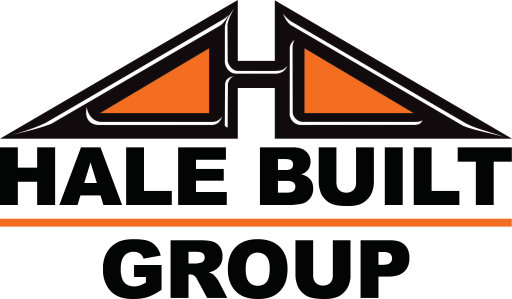
Commercial shoring construction is vital in New Jersey and the Mid-Atlantic. Hale Built Group offers this commercial structural, emergency, and environmental remedial solution in Maryland, Virginia, D.C., Pennsylvania, New York, New Jersey, and Delaware.
This service guide briefly outlines the importance of shoring and introduces Hale Built Group's expertise in commercial shoring solutions in New Jersey and beyond.
Please explore this article to learn more about our commercial counterpart to shoring services, or contact us to get started with a free estimate.
Commercial shoring temporarily supports structures during construction, renovation, or repair, ensuring stability and safety. Unlike residential shoring, which often deals with smaller-scale projects, commercial shoring addresses the complexities of larger buildings and infrastructure.
This method prevents commercial structural collapse and allows for safe construction practices, especially in environments with heavy loads or unique architectural elements. Hale Built Group tailors shoring solutions to meet the specific needs of each commercial project, ensuring a foundation of safety and efficiency.
We employ commercial shoring services to secure buildings' structural integrity and safety. Below, we've listed typical construction or emergency scenarios that warrant commercial shoring services:
Applying commercial shoring techniques mitigates risk in each of these scenarios, ensuring that construction and renovation projects proceed safely and efficiently.
To complement the previous section, we've listed typical structural shoring systems we employ to provide safe and effective commercial shoring:
This section further discusses shoring systems by providing short descriptions of materials used when shoring properties:
Steel: Ideal for heavy-duty support due to its strength. Steel allows for flexible adjustments on-site in both temporary and permanent shoring projects.
Aluminum: Lightweight and corrosion-resistant, contractors often prefer aluminum for projects needing fast assembly and disassembly. Its ease of handling makes it suitable for temporary shoring.
Concrete: Concrete is chosen for its stability and strength and used in permanent shoring applications. We pour concrete on-site or use it as precast panels, offering fire resistance and sound dampening.
Appropriate material selection depends on project requirements like scale, duration, and environmental conditions. Steel and aluminum offer flexibility for temporary needs, while concrete provides long-term stability.
Hale Built Group follows a structured process to address each project's unique demands while upholding the highest safety and quality standards.
Our approach guarantees the precise and careful execution of every shoring project from the initial planning stages to its completion.
Here's a closer look at our comprehensive commercial shoring construction process:
1. Planning: Our journey begins with initial consultations to thoroughly grasp your project's scope and requirements. This foundational step aligns all parties on objectives, timelines, and expectations.
2. Site Evaluation: Next, we thoroughly analyze the construction site. This in-depth evaluation identifies potential challenges and opportunities, allowing us to anticipate needs and tailor our approach accordingly.
3. Design and Engineering: Leveraging the insights gained from the site evaluation, we move on to design and engineering. Our team develops a customized shoring plan that not only meets the specific needs of your project but also adheres to stringent safety standards, ensuring a secure construction environment.
4. Material Selection: Selecting suitable materials is crucial for the success of any shoring project. We choose materials that best fit your site's structural demands and environmental conditions, balancing strength, durability, and cost-effectiveness.
5. Installation: With a solid plan and suitable materials, our experienced professionals undertake the precision-driven execution of the shoring installation.
6. Monitoring and Adjustment: Shoring is a dynamic process that requires continuous monitoring. We maintain vigilant oversight to enhance the effectiveness of the shoring work and make necessary adjustments in response to any project changes or unforeseen challenges.
7. Completion and Review: Upon nearing project completion, we conduct a final assessment to check that we met all objectives and that the work complies with all safety regulations and standards. This step reaffirms our commitment to delivering superior results and client satisfaction.
Our structured approach to commercial shoring construction underscores our dedication to safety, quality, and client needs. With Hale Built Group, you can be confident that your shoring project is in expert hands from start to finish.
Several factors contribute to the overall cost when embarking on a commercial shoring project. It's responsible to consider these elements during the planning phase to ensure a clear understanding of potential expenses:
1. Project Scope and Scale: The size and complexity of your project directly impact costs. Larger projects with more extensive shoring needs will naturally require a greater investment in materials and labor.
2. Material Selection: The cost of shoring materials—steel, aluminum, or concrete—varies. Each material offers distinct benefits and drawbacks, and prices reflect factors like durability, strength, and installation requirements.
3. Site Specifics and Complexity: Challenges posed by the construction site, such as rugged terrain, limited access, or environmental considerations, can increase the complexity of shoring solutions and, consequently, the cost.
4. Project Duration: The length of time shoring is required also affects cost. Longer projects may necessitate more durable materials and solutions, leading to higher expenses.
5. Labor and Expertise: The cost of skilled labor and the level of expertise required for specialized shoring solutions can significantly influence the overall budget.
By carefully evaluating these factors, project managers and stakeholders can develop a more accurate budget for their commercial shoring projects, ensuring a balance between cost efficiency and the integrity of the construction effort.
Discover how our shoring solutions safeguard the structural integrity of commercial properties. Our case studies demonstrate our expertise in stabilizing and supporting buildings under threat.
Featured Case Study:
Secure the success and stability of your commercial construction project with Hale Built Group. We tailor our comprehensive shoring solutions to meet your needs, emphasize safety and efficiency, and stay on schedule.
Contact us today for a free estimate and expert guidance on your next commercial construction endeavor, and shore confidently.
